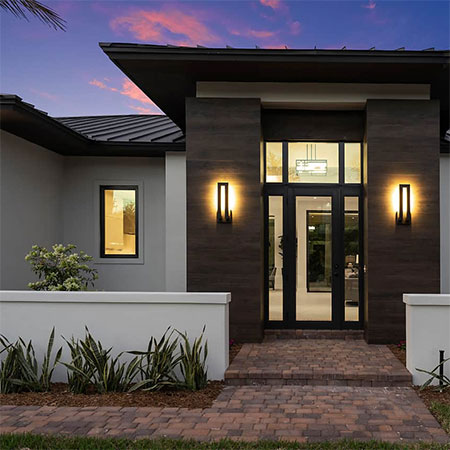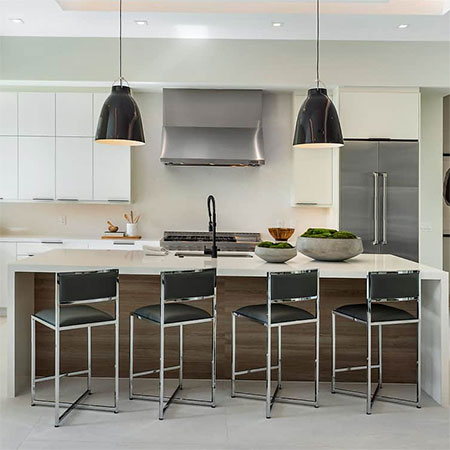Renovate an Older Home with Eco-Friendly Alternatives
If you are going to the expense and trouble involved in renovating an older home, make sure to incorporate these eco-friendly elements.
18/05/2020
When opting to renovate an older home, there will be some elements that you may want to restore to their original condition to maintain the integrity of the property, but others that can be more eco-friendly. We take a look at a few eco-friendly alternatives that should be considered for every home renovation.
South Africa has plenty of older homes that are worth investing in, whether to rip out and renovate from scratch or to restore even some of the old traditions in these home. I grew up on the West Rand, where railway houses stretched along the tracks looking like a row of little boxes. When they were first built, I'm sure they all looked just the same, but over the years many have been added onto or extended. These homes are a treasure to own, with large living spaces and a fairly large expansive plot of land. Their face brick design, front porches and boxy shape hide what's inside, with some even having the original wood detailing, tin ceilings and hardwood or parquet floors.
It is possible to renovate or restore an older house and still incorporate eco-friendly or sustainable elements.
marcjulienhomes.com
More than a few of these vintage properties have been given a modern update, with modern detailing and fittings both inside and out. They have automatic garage doors, the latest in window frames and double-glazing, and even some of the older accents have been retained for a touch of history to be left behind.
If you plan on investing in an older home, consider these eco-friendly alternatives when adding the finishing touches:
1. Low VOC Paint for Indoors and Outdoors
Have you ever walked into a house and from what you see and smell, you can outrightly tell that it has just been painted? Those types of paint contain high VOCs levels (volatile organic compounds) and are the kind you want to avoid when painting your house. When choosing paint, go for low or zero VOC paint. Low VOC paints use water as a carrier for the paint instead of other toxic solvents containing chemicals that can be harmful to your respiratory system.
2. Invest in Energy Efficient Appliances
You might be hanging on to that washing machine you purchased 20 years ago but don’t want to let go because you have an attachment to it. Don't! Most appliances that were made some years back were built without efficiency in mind, meaning that they consume energy in excess. Modern appliances are designed to be energy saving. When remodelling or renovating an older property, it’s important to replace old appliances with energy-efficient models, which will save you money as far as your energy bills are concerned.
3. Use Reclaimed or Modern Materials or Upcycle what you have
Yes, it can be boring to live in the same house for 20 years without changing anything. You should take advantage of the heavy influence DIY has achieved over the past few years to glam up an old house. Use applications like Pinterest to make the same home interesting and practical to your lifestyle without ripping out and starting from scratch. You can also resort to exciting and more affordable options such as repainting your cabinets, adding wall cladding, fixing what is broken, etc. If you plan to replace anything in one room, you can also revamp, and take it to another room.
4. Have the Property Properly Insulated
Insulating your house with consideration towards the environment. You can also go digital by installing thermostats in your house, which help automatically regulate your heating and cooling system settings to minimize energy usage.
With the changing seasons, temperatures in your home can be extremely uncomfortable. Double- or triple-glazing for windows allows you to control the temperature in a home throughout the seasons. Ceiling insulation is a must to ensure minimum heat loss or gain.
5. Embrace natural lighting and go solar
When replacing or installing additional windows, it is important to ensure you have windows positioned where sunlight can easily enter the house. Consider the installation of double-glazed windows that might be more expensive than conventional windows upfront, but will save you money in the long-term. Plus, the benefit of having a well-insulated home that is comfortable all year round.
Tap into solar energy wherever you can. Solar installations, while still fairly costly to install, give you a long-term saving and release you from the problems being experienced by the local supply grid. Using solar energy is also an incredible way to preserve the environment.
6. Choose locally available materials
Choosing local material means that they have been made locally and everything about it is local. It requires less energy to get the local material to where you are because they are highly available. More often than not, local materials are also durable and affordable compared to imported materials, having been designed and manufactured to weather our local climate extremes.
Nothing is more satisfying than renovating a home with a finished look and comfortable feel you desire. It’s even more rewarding if you do so in an environmentally friendly way. The above are just a few eco-tips you may need to know when renovating an old house.









